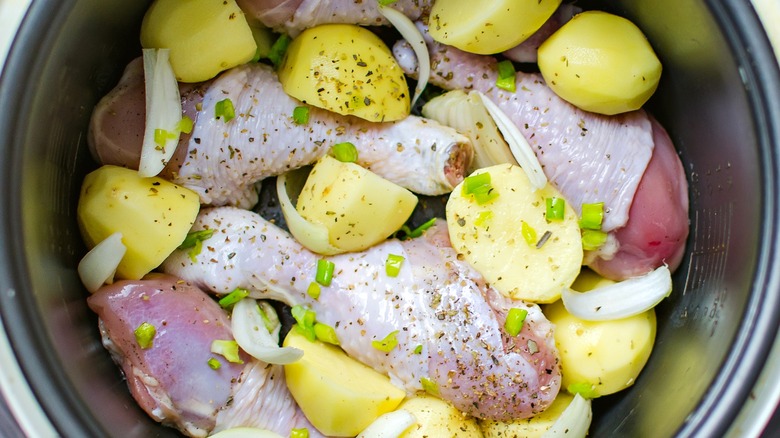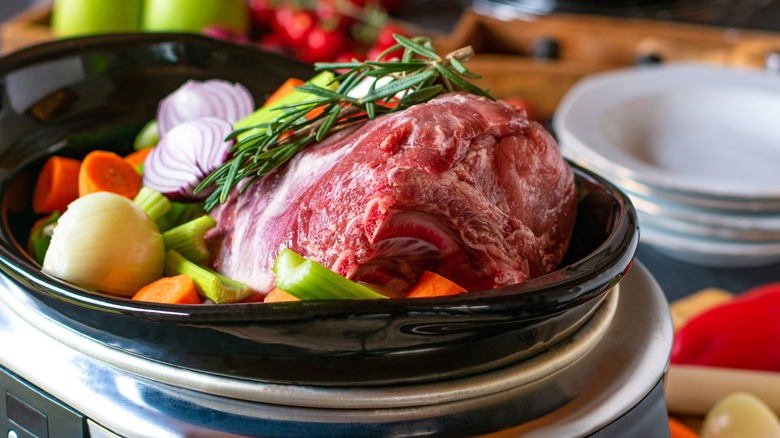The Big Seasoning Mistake You're Making Inside Your Slow Cooker
A slow cooker is often thought of as a set-it-and-forget-it appliance, but that's not always the case ... at least if you want the results to be as flavorful as possible. When The Takeout spoke with Susan "Lazy Susan" Goldenberg, owner, recipe tester, and blogger at The Lazy Slow Cooker, about using specific flavor enhancers in a slow cooker, she warned against tossing everything into the pot all at once — especially fresh herbs.
Just as it's a mistake to put an expensive cut of steak in the slow cooker, tossing fresh herbs in from the start can be a waste of produce. "The long, slow cooking time of crockpot recipes tends to overcook delicate herbs to the point of having no flavor," Goldenberg notes, adding, "However, this does not mean they don't have a place in slow cooking."
You can always substitute fresh herbs for dry using the correct ratio, but that doesn't mean the fresh stuff can't be incorporated into a slow cooker meal. Goldenberg explains that teasing the most flavor out of fresh herbs depends on when they are added to the mix. She describes, "I often suggest 'herb layering' in slow cooking to help enhance flavors. For example, I may use dried basil at the start of a recipe and then stir in some fresh basil about 15 to 30 minutes before serving." The reasoning behind this is to let the herbs both infuse the dish and pop as a garnish. However, for some other meals, another technique might work better.
Another method for using herbs in a slow cooker
Plenty of foods don't belong in a slow cooker, but Susan Goldenberg doesn't think fresh herbs need to be added to the list. They merely require extra considerations so you get all the flavor you paid for. Herb layering is one way to make the most out of them, but as the saying goes, there's more than one way to peel an orange.
"Another way I like to use certain fresh herbs is to lay them in a bundle on top of the slow-cooked dish during cooking," Goldenberg says. "This allows the herb to steam and infuse the dish with its essence by taking advantage of the steamy, humid cooking environment." That may not do a soup justice, where the herbs would be swallowed by the liquid and thus lose flavor over time. Yet, for a pot roast that is just sitting in a bit of liquid, sweating out the flavors would work quite well.
Goldenberg points out one additive in particular that is ideal for steaming. "One of my favorite herbs to use for this process is rosemary," she says. "Fresh rosemary holds up well during cooking and can be easily removed afterward. Only the rosemary flavor remains — in the most perfect way!"

